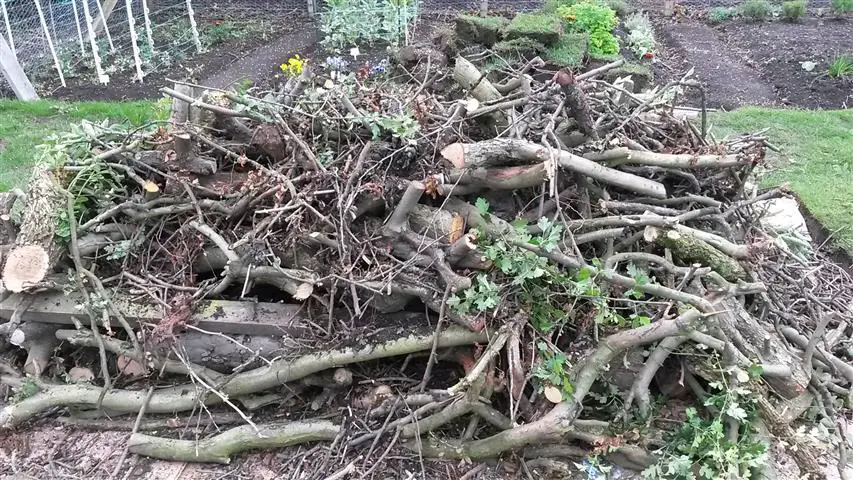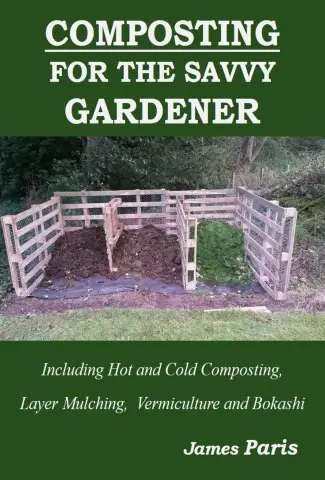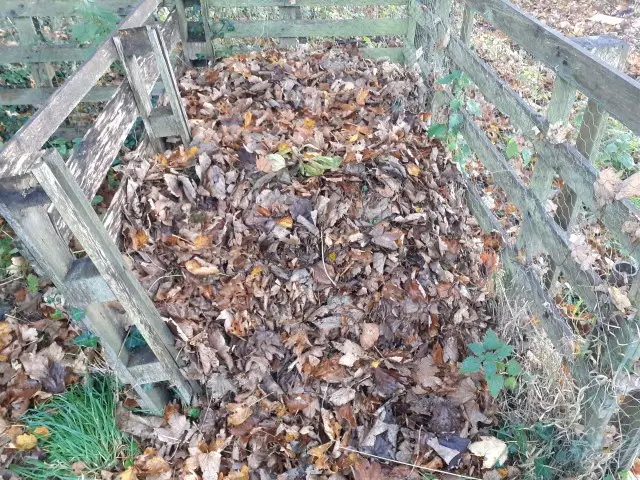
Most people regard fallen leaves as a real nuisance as they lay on the grass and cause it to go yellow and die if not removed ASAP. This is however only part of the story.
The other part is one that should cause all vegetable gardeners to sit up straight in their seats – free nutrient-rich compost!
Here is the short version of how you can make your own free compost from the fallen leaves and grass clippings from the last grass mowing of the season.
- Rake up a large pile of fallen leaves and put them into a cordoned off area for your compost – a pallet composter is best for this.
- Mow your grass and collect the clippings, also add the clippings of previous cuts to the pile and any green organic matter available including kitchen vegetable waste.
- Keep going until the pile measures approximately 1 cubic yard (3ft x 3ft) then water generously
- After about 5 days turn the compost over. Test and add water if dry. Do this every few days and you will get usable compost within 2-3 months in warmer weather. Over the winter it will do virtually nothing unless it is a mild winter or the pile is insulated.
Which leaves are best for composting
Always choose deciduous trees for leaf compost and never pine needles – unless you require an acid rich compost for rhododendrons or azaleas both of which thrive in an acid-rich soil.
In this case you may add a measured amount of pines to create an Ericaceous compost – which is a compost suitable for acid loving plants.
– which is a compost suitable for acid loving plants.
For most (if not all as potatoes can sometimes do well in ericaceous compost) vegetables however, trees such as sycamore, beech, hawthorn, birch, ash, cherry, maple, and all fruit tree leaves make good leaf compost.
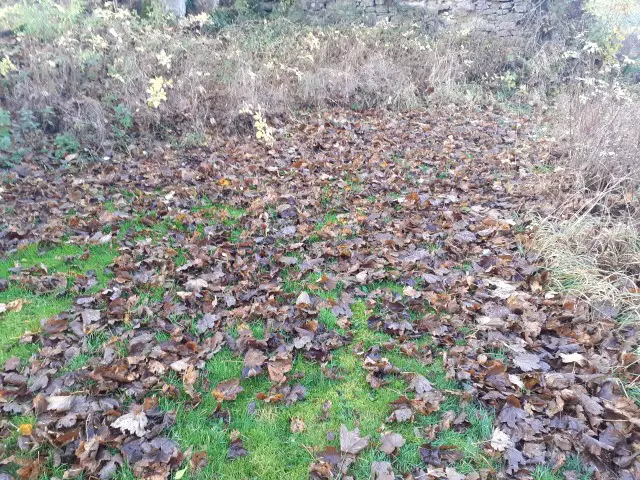
What is the difference between leaf compost and leaf mulch?
The terms ‘compost’ and ‘mulch’ (leaf mulch is often called leaf mold) with regard to leaf compost are often used together without a proper distinction between the two. The fact is however that there is one main difference between them.
leaf compost is rich in nutrients – leaf mulch is not!
Therefore when you are making leaf compost you add ‘green’ organic material. This is where your primary nutrients such as Nitrogen (n), Phosphorus (p), and Potassium (k), come from.
This leaf compost can be used to feed your veggies, condition the soil, and of course can be added to your raised beds or square foot gardens.
Without this infusion of green material all you will have is the carbon element or ‘brown’ leaves with zero nutrient value.
This is in fact what you have with leaf mulch. It is good as a cover to keep an area moist, or to restrict weed growth. It can also be mixed in with the soil to help with the soil condition or ‘friability’.
What percentage of leaves to grass is needed for compost?
When collecting your materials together to make compost, you have to have a clear understanding of what exactly you are trying to achieve.
Or to put it another way – how much leaves and how much grass to make a good compost.
Keep in mind that with any compost mix, the brown material such as leaves, straw, or sawdust, make up the ‘bulk’ of your compost and so it makes sense that the brown material is the greatest percentage at around ¾ to 4/5th of the total.
This means that for every cubic yard of leaves you should add around 7 cubic feet of grass or other green material.
It’s not rocket science – so don’t get too hung up on the percentages!
A simple to follow guide would be to use a shovel – 4 shovels of leaves to one shovel of grass will give you a good mix of green and brown material that will produce good quality compost.
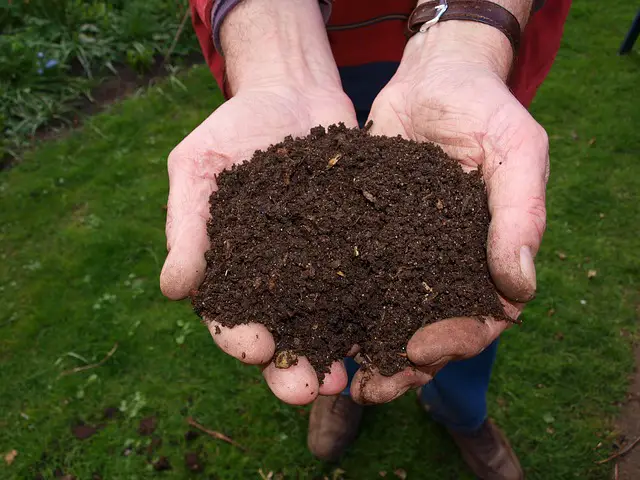
Need compost in a hurry? Then there are a couple of things you can do to speed up the composting process.
- Before piling the leaves into a heap, lay them out on a flat surface and run over them several times with the lawnmower. This will break them down into small pieces that are easier to convert into compost.
- Once you have piled it into a heap then added your grass clippings, mix it all together and water thoroughly. Continue this process on a daily basis, but only water when the material is looking dry. Keep turning the heap over and you could have usable compost in around 30-40 days provided the outdoor temperature stays above 50F.
If you use this quick method to produce compost, you will notice just how little brown material you have after you have chopped up the leaves with the mower.
Unfortunately, the only solution is to gather more leaves for the compost – it will all be worth it in the end!
How to make leaf mulch
The quickest way to make leaf mulch is to cram a load of damp fallen leaves (after shredding with the lawnmower or woodchipper) into a black bin bag, tie the top and puncture a few holes in the sides and bottom.
leave it for 6 months to a year or more to break down thoroughly.
After this time you will have a really good mulch that you can add to the soil to improve the soil condition in general, or just use as a cover to keep the soil around your plants moist.
Like the compost itself, your leaf mulch should be friable or slightly crumbly when handled at the end of this time, and not wet and smelly which would indicate too much moisture and in the case of compost particularly – not enough air.
Summary
So the Autumn season although spelling a decline in the growing activity, is not all bad news, and indeed for the gardener it can be something of a bonanza as fallen leaves offer up a source of free compost and leaf mulch.
It is also a time for gathering materials for other projects such as building a Hugelbed. This is a no-dig method that requires an abundance of forest debris – which the Autumn season supplies freely!
